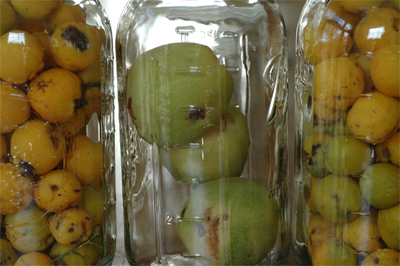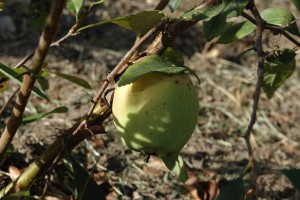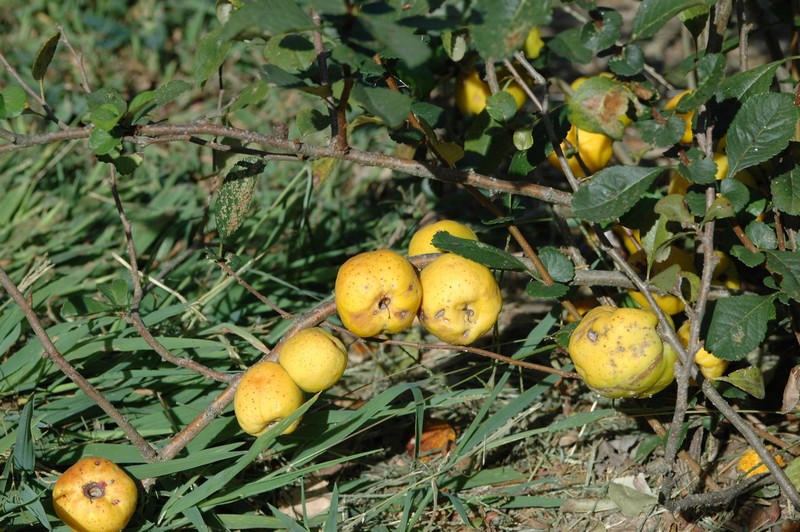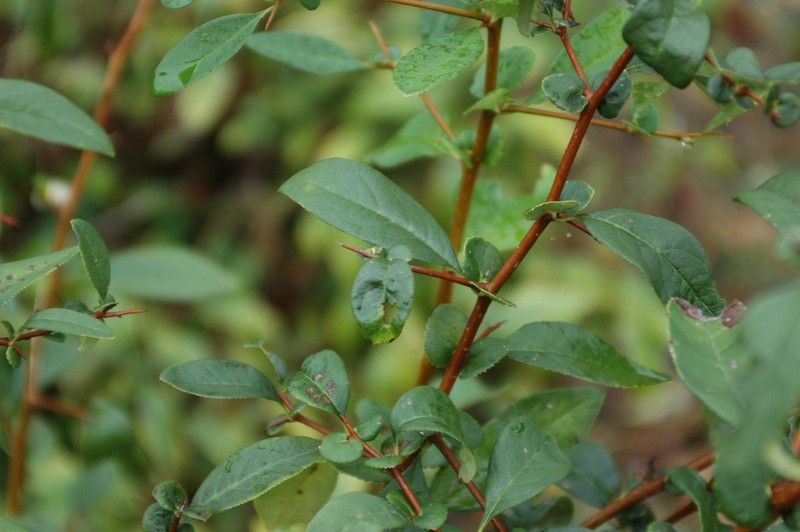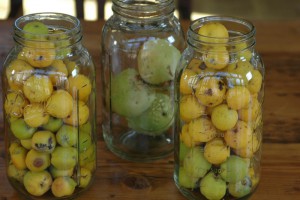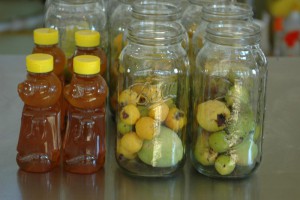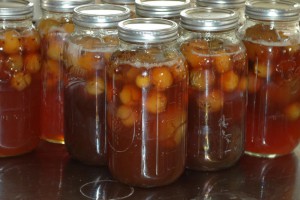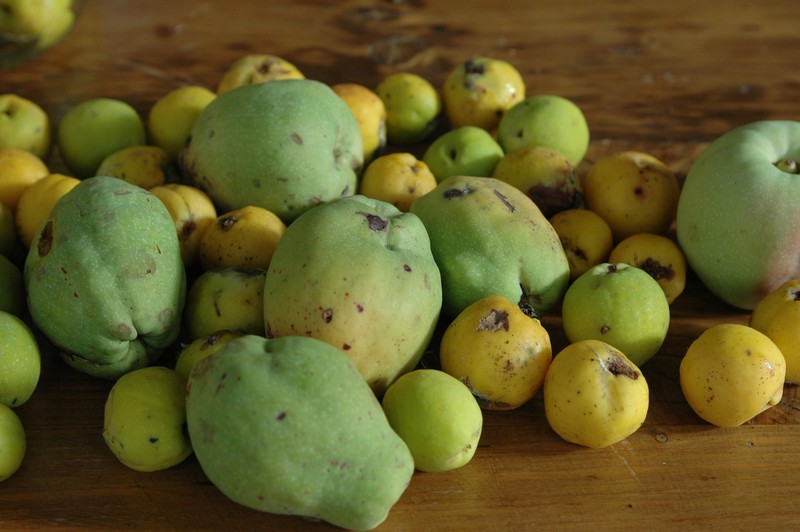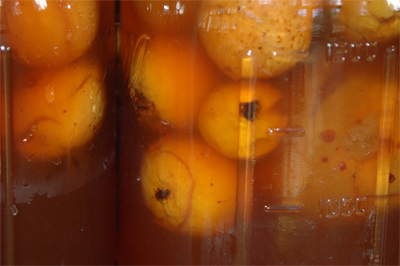Pleasantly, contemporary research has confirmed many of these traditional uses. Organic acids ( malic acid, citric acid), Saponins (2%), Tannins, Flavones, Volatile oils, and Triterpenes, contained in the fruit, are largely responsible for the fruits action on the body. Here is a sampling of traditional uses of the Japanese quince.
Cough and cold Cure
Triterpenes and sterols found in Japanese quince inhibit Streptococcus pyogenes, the bug that causes strep throat and the more dangerous follow on, rheumatic fever. In addition, it has a proven anti-inflammatory effect which reduces the swelling and tenderness associated with a sore throat, and the swollen shut airways associated with a common cold and influenza. The fruit was also found to inhibit bacteria caused sore throats on another level. Quince tannins inhibited hyaluronidase, an enzyme produced by bacteria that causes painful swelling in the throat and nasal passages.
Immune stimulant
In an experiment with mice, Japanese quince was found to stimulate immune function, even when the mice were given immune system destroying chemotherapy drugs.
Joint Pain
Joint and muscle pain, anyone? Well, Japanese quince has been shown to reduce inflammation and this explains why it’s a traditional Japanese cure for joint pain and arthritis. One study showed that a tea of Japanese quince decreased swelling in artificially induced arthritis in mice! Ok, it might be mice proof, but, it backs up a long held traditional use of the fruit.
Another study found that Japanese quince had a potent anti-inflammatory effect and it occurred on cellular level. The research found that quince polyphenols(tannins) inhibited histamine release from mast cells…the cells at the root of much joint inflammation.
A third study with laboratory animals revealed that syrup made with 10% alcohol was the most effective at reducing joint pain. The researchers concluded Japanese quince s use in rheumatoid arthritis, prosopalgia, and hepatitis, all three inflammatory conditions, was justified.
In Rheumatoid Arthritis, long term joint inflammation causes joint damage. Two additional groups of researchers found that Japanese quince could be used to reduce this long term inflammation and in turn, reduce the joint damage that occurs over time.
Inflammation
If inflammation is a problem, Japanese quince may be the solution. There are two types of inflammation, temporary and chronic. Temporary inflammation would be like that associated with a cough or cold, a sun burn, or over exertion caused sore muscles. Examples of chronic inflammation would be things like rheumatoid arthritis, hepatitis, and eczema. In both types of inflammation, tradition and research supports the use of Japanese quince.
Diarrhea Cure
In traditional Chinese medicine, Japanese quince is used to treat bacteria caused diarrhea. Researchers found that the modest little fruit was active against E. Coli caused diarrhea, and three compounds found in the fruit were at least partly responsible. (Oleanolic acid, ursolic acid, and betulinic acid.)
New Parkinson Medication?
Japanese quince is traditionally used a wide variety of nervous disorders, including migraine, depression, and chronic pain. Researchers found that it had an effect, on a cellular level, on the big mother of nervous disorders, Parkinson’s Disease. Who knows, there may be a new and useful Parkinson medication locked in the Japanese quince.
Health Booster
In traditional Chinese and Japanese medicine, it is considered a tonic, a medicine which stimulates strength, vigor in health. Most importantly, it is thought to increase the bodies’ own capacity to heal itself. This traditional use in China and Japan is something the scientific community is beginning to prove. The conventional wisdom on this one is that if you are feeling run down, or are recovering from an illness, a boost from the quince may be exactly what you need.
As a medicine, quince syrup is probably the best way to go. Use the syrup that results from canning the quinces for a sore throat, a sore joint, or any other form of inflammation. Especially if it is as a result of a cough or a cold. Lastly, the Japanese say it is good to stimulate general health, so, if you are feeling run down, you may want to add Japanese quince syrup to your health regimen. The recommended amount, for medicinal uses, is a tablespoon of the syrup, three or four times a day.

